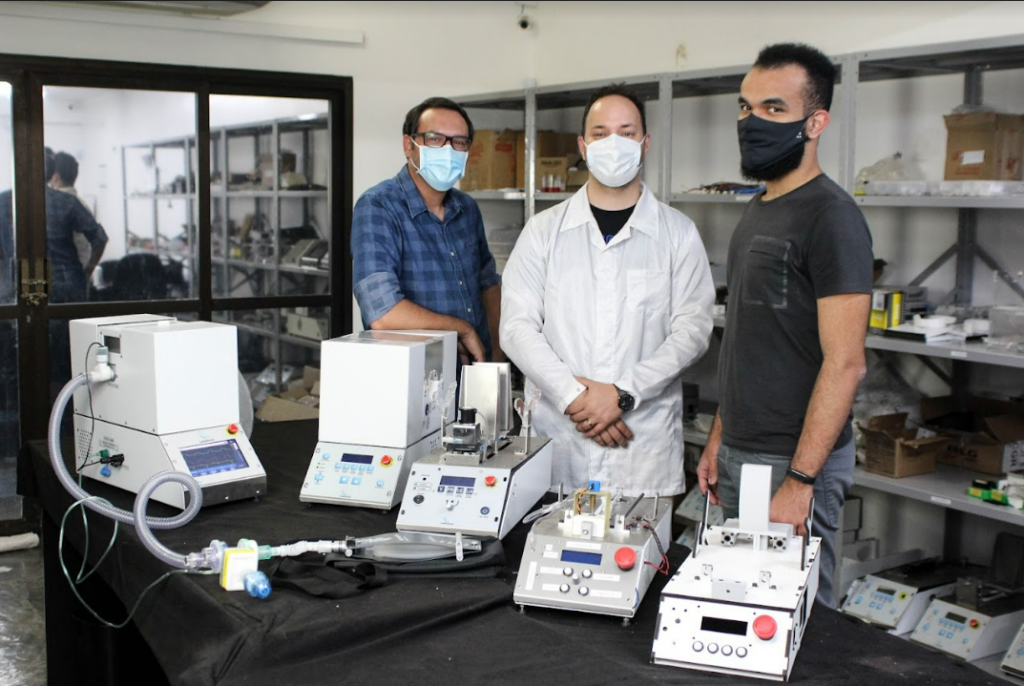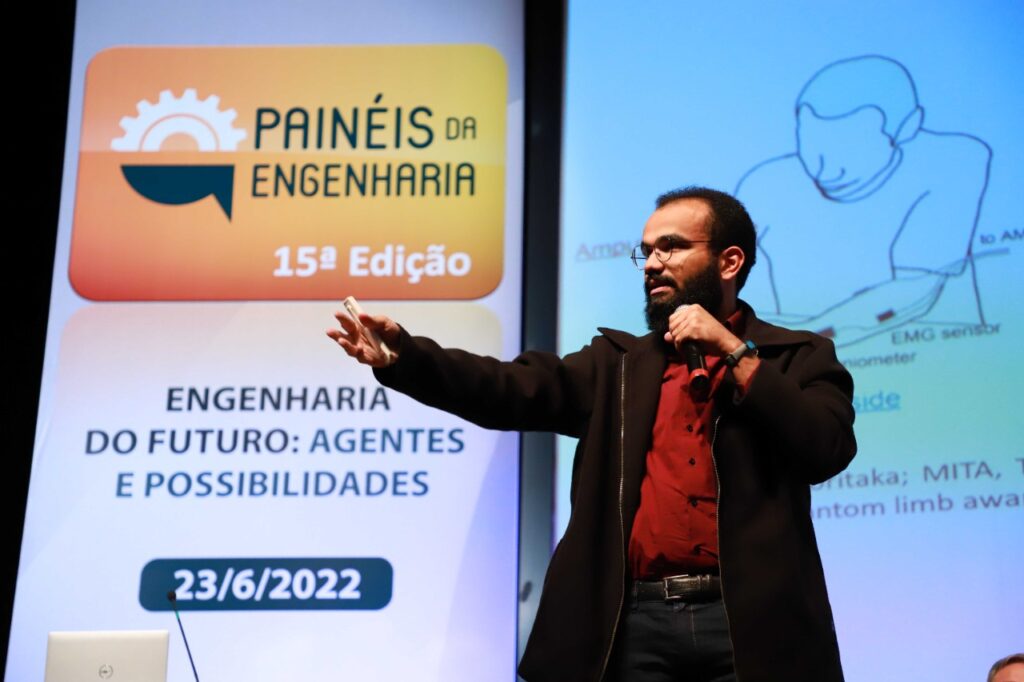Designing ventilators and gamifying vaccines, this ISEF alum is pushing back against COVID-19 in Brazil

The COVID-19 pandemic changed the world almost overnight. As the challenges brought forth by the virus have evolved over the past three years, so have the responses of scientists and innovators.
Luiz Fernando da Silva Borges is one such innovator. Luiz, now a computer engineering student at the Inteli Leadership and Technology Institute in São Paulo, in his native Brazil, is an alumnus of the International Science and Engineering Fair in 2015, 2016 and 2017. In 2016, he was awarded Best of Category in Biomedical Engineering and the Philip V. Streich Memorial Award, which included a trip to England to attend the London International Youth Science Forum (LIYSF). After graduating from high school, Luiz continued to develop his latest project, a brain-computer interface (BCI) which helps to identify people in pseudocomas and give them a means to communicate. By the end of 2019, clinical trials for his BCI interface had been authorized and were set to begin when the world, including the trials, came to a screeching halt.
Rather than lament, he refocused his energy on a new goal. “With clinical trials blocked, I suggested to the supporter of my research that we do something about the crisis of medical equipment in the world, especially that of mechanical ventilators,” said Luiz.
Brazil, like many countries worldwide, faced major ventilator shortages in the early days of the pandemic. Individuals, families and communities suffered devastating losses of countless loved ones due to the lack of medical equipment and supplies. Luiz took a leave of absence from school and proposed to the sponsor of his BCI research that they do something about it. Joining a global effort of teams working to develop and manufacture emergency lung ventilators, they worked to adapt findings from MIT’s open source Emergency Ventilator Project to make a difference.
The concept entailed replacing the turbines and compression apparatuses of mechanical ventilators with a resuscitation balloon known as a bag valve mask (BVM), also called an Ambu bag. Commonly accessible, mass-produced and easy to sterilize, the one drawback of Ambu bags is that they are intended for manual ventilation, and adapting the device into a viable emergency mechanical ventilator would require more than simply creating artificial hands to squeeze the Ambu bag. Over the next six months, Luiz assembled and led a team of four engineers to develop an emergency pulmonary ventilator that could work mechanically while using readily available materials. Their project, which has since been awarded a patent and completed successful clinical trials, has been put into use to support patients in critical condition.
On his motivation to take on such a project Luiz said, “I believe that the purpose of scientific and technological activity should be to alleviate human suffering as well as to save lives.”



As the pandemic raged on, Luiz saw another opportunity to alleviate suffering. After the vaccine became available, many people remained reluctant to receive it. Part of this, Luiz believes, is a product of the growing tide of scientific denialism taking hold in many public discourses—but that is not the whole story. Some of the resistance stemmed from the simple fear of needles and the unpleasantness of receiving a shot, especially for young people. Luiz once again sprang into action.
He envisioned, and then designed, a way to transform the scary process of getting a shot into a fun and mesmerizing virtual reality experience. Here’s how it works:
At the beginning of the appointment, the child puts on a pair of virtual reality glasses. When cotton is used to apply alcohol on the recipient’s arm, what the child sees through the glasses is a virtual fairy fitting an “ice stone” into armor that the user appears to be wearing. Then, when the vaccine is administered, the child sees the same fairy fitting a “fire stone” into the armor. At this point, most children’s brains perceive the needling as their arm getting hot, which abates what might otherwise be a negative reaction to the procedure.
“One of the themes of my award-winning project at ISEF in 2016 was the induction of tactile sensations in amputees using a combination of stimuli,” explained Luiz. “I used the same concept, with virtual reality glasses on the children being vaccinated, so that they would not feel as much discomfort at the time of vaccination.”
Luiz first devised the system while on vacation in his hometown of Aquidauana, in the state of Mato Grosso do Sul. After developing his prototype, he contacted his city’s mayor, who mobilized the health department to adopt the project at two of the major vaccination posts in the area. The program was an instant success. Not only were parents flabbergasted as their children smiled through receiving their shot, but as word spread, more and more people wanted to receive the vaccine, even if only to enjoy a virtual reality experience for the first time.
Luiz has received national attention for his innovation, which spurred institutions across Brazil to approach Luiz in efforts to replicate the project in their own vaccine campaigns. In Aquidauana, the program is expanding to include procedures such as blood collection and other vaccinations.
This National Immunization Awareness Month, we celebrated Luiz and his innovative drive to promote the health and safety of his community and, indeed, all of Brazil. We are excited to follow all that is to come in Luiz’s bright future.


